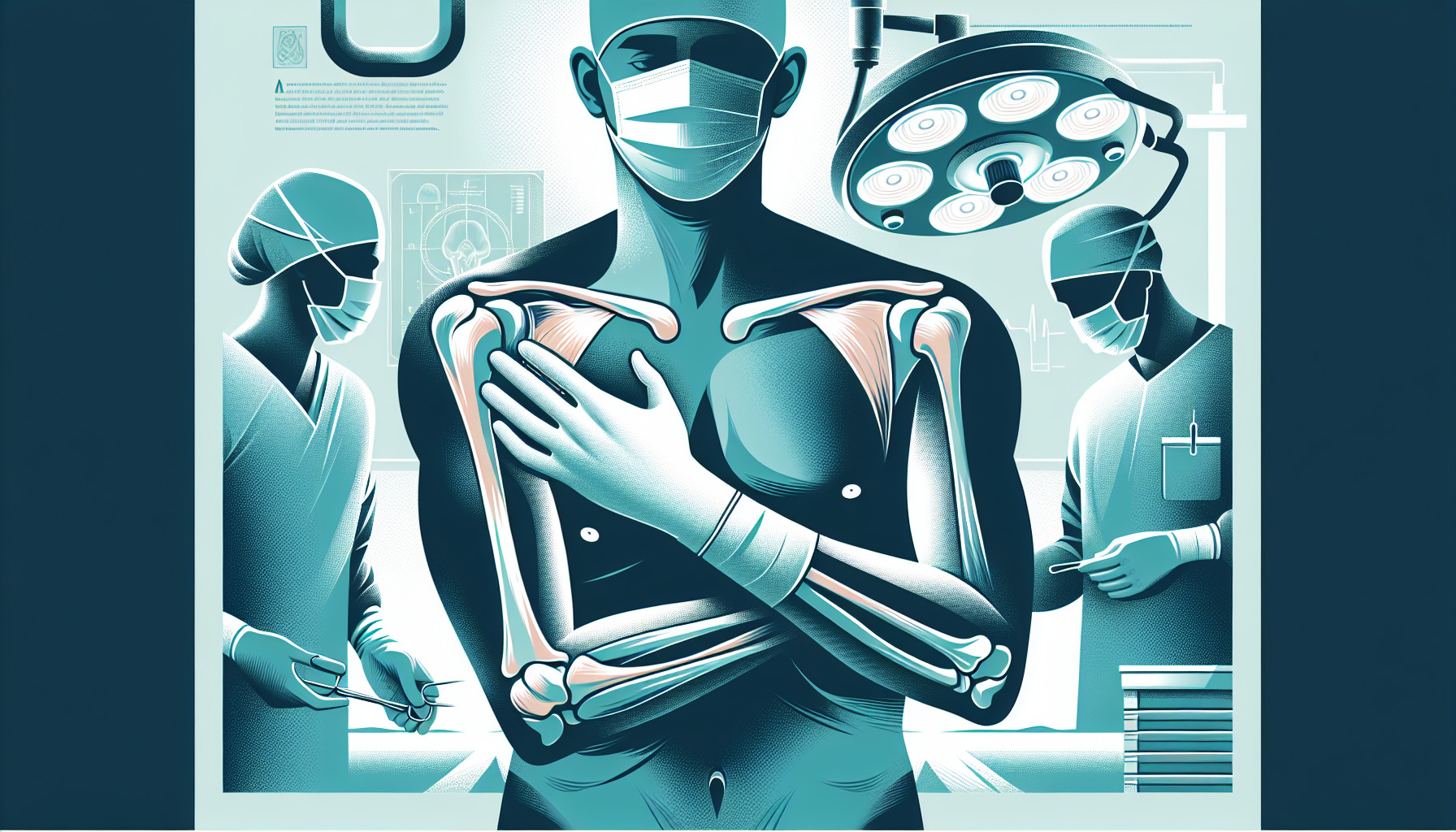Our Summary
This research paper discusses a study that focused on the use of shoulder hemiarthroplasty (HA) - a type of shoulder replacement surgery - to treat complex proximal humeral fractures, or breaks near the top of the arm bone. This type of treatment is not common due to concerns about how well the shoulder’s “greater tuberosity” (a part of the arm bone) will heal after surgery.
The study followed 87 patients who had this treatment for an average of 14.7 years. The results showed that after ten years, 96.6% of the shoulder replacements were still functioning well. The patients also reported good scores on pain and ability to move their shoulders, although those with complications in the healing of the greater tuberosity had worse outcomes.
The study also found that over half of the patients showed signs of erosion in the shoulder socket, which led to worse outcomes. However, patients who had good results two years after the operation usually maintained these results over time.
The researchers concluded that with careful patient selection, good surgical technique, and careful post-surgery management, shoulder hemiarthroplasty could have a high long-term success rate and provide good pain relief. They suggested that this treatment should be considered for younger, active patients with good bone quality and an intact shoulder cuff.
FAQs
- What is shoulder hemiarthroplasty and when is it used?
- What were the long-term results of the study on patients who had shoulder hemiarthroplasty?
- What factors contribute to successful outcomes in shoulder hemiarthroplasty?
Doctor’s Tip
One helpful tip a doctor might tell a patient about shoulder replacement surgery is to follow a strict rehabilitation program after the procedure. This typically includes physical therapy exercises to strengthen the muscles surrounding the shoulder joint and improve range of motion. Consistent effort in rehabilitation can help ensure a successful outcome and long-term function of the shoulder replacement. It’s important to communicate any concerns or setbacks with your healthcare provider during the recovery process.
Suitable For
Overall, patients who are typically recommended for shoulder replacement surgery, specifically shoulder hemiarthroplasty, are those with complex proximal humeral fractures who have good bone quality, intact shoulder cuff, and are younger and active. These patients are more likely to have successful long-term outcomes with good pain relief and improved shoulder function. It is important for surgeons to carefully select patients for this type of surgery and to closely monitor their progress post-surgery to ensure optimal results.
Timeline
Before shoulder replacement surgery:
- Patient experiences chronic shoulder pain and limited range of motion
- Patient undergoes various non-surgical treatments such as physical therapy, medications, and injections
- Patient and surgeon decide that shoulder replacement surgery is the best option
After shoulder replacement surgery:
- Patient undergoes the surgery, which involves removing the damaged parts of the shoulder joint and replacing them with artificial components
- Patient goes through a period of rehabilitation and physical therapy to regain strength and range of motion in the shoulder
- Patient may experience some pain and discomfort in the immediate post-operative period
- Over time, the shoulder heals and the patient experiences improved function and reduced pain
- Patient continues with regular follow-up appointments to monitor the success of the surgery and address any issues that may arise.
What to Ask Your Doctor
Some questions a patient should ask their doctor about shoulder replacement surgery include:
- What are the potential risks and complications associated with shoulder hemiarthroplasty?
- How long does the recovery process typically take, and what can I expect in terms of pain management?
- Will I need physical therapy after surgery, and if so, how long will I need to participate in therapy?
- How long can I expect the shoulder replacement to last, and what factors may impact its longevity?
- What are the criteria for being a good candidate for shoulder hemiarthroplasty?
- Will I need any additional surgeries or treatments in the future related to the shoulder replacement?
- How soon after surgery can I expect to return to normal activities, such as driving or working?
- Are there any lifestyle changes I should consider making after the surgery to ensure the best possible outcome?
- How often will I need to follow up with you or another healthcare provider to monitor the success of the shoulder replacement?
- Are there any specific exercises or movements I should avoid after surgery to prevent complications or damage to the shoulder joint?
Reference
Authors: Zhao Y, Zhu Y, Lu Y, Li F, Jiang C. Journal: Int Orthop. 2023 Jun;47(6):1517-1526. doi: 10.1007/s00264-023-05746-5. Epub 2023 Mar 27. PMID: 36971818
